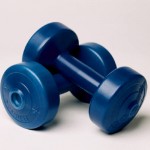 5 Ways to Control Calorie Intake at Holiday Parties
5 Ways to Control Calorie Intake at Holiday Parties
1. Be a smarty before you party. When we go all day without eating or skip lunch prior to a party, this usually leads to unhealthy choices throughout the remainder of the day. Make time for a cup of soup, small salad with vegetables and black beans or a few whole grain pita slices with hummus.
2. Choose foods with power! Foods that contain a high content of protein, fiber and water (fish, lean meats, beans, whole grains, fruits and vegetables) have the highest satiating power. Simple carbohydrates and high fat foods (cookies, cakes, breads, and cheeses) have a lesser effect on our sense of “fullness.”
3. Give yourself 20. Practice good portion control by waiting 20 minutes in between visits to the buffet table. This gives our bodies time to recognize the satiating power of the food we just ingested.
4. Hydrate and deflate. Beer, wine, and sugar-laden drinks are high in calories and have zero nutritional value. Naturally, the more we drink the more we visit the restroom. For every alcoholic beverage, drink one glass of water. Staying hydrated will decrease the likelihood of headaches, fatigue, and feeling bloated the next day.
5. Do yourself a favor and enjoy the flavors. Socialize away from the food. Mindless eating often occurs when we’re engaged in conversion and food is close at hand. Always eat sitting down and enjoy your holiday meal
Helen Agresti is a Registered Dietitian with Professional Nutrition Consulting, LLC. She lives in Pennsylvania with her husband and 5 children. For more Nutrition advice and healthy recipes follow her on twitter @HelenAgresti and on the web www.pronutritionconsulting.com
 Subscribe
Subscribe







